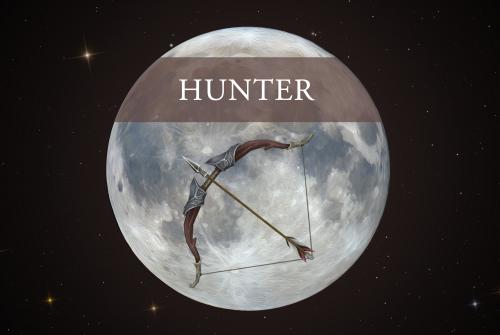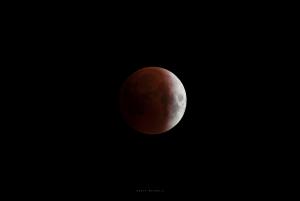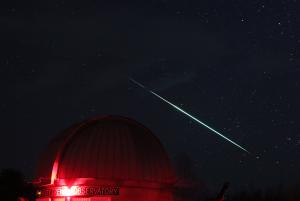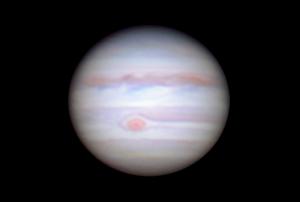Celebration of Space - October 27, 2023
Tomorrow, Saturday, October 28, 2023, at 4:24 pm ET, the Moon will arrive, in its orbit, on the opposite side of Earth than the Sun. We call this “opposition”, but better yet, just call it the full Moon. The October full Moon carries the moniker, The Full Hunter’s Moon. Regarding supermoon status, the Hunter’s Moon will occur almost three days after the monthly lunar perigee, which is when the Moon is the closest to Earth in its slightly elliptical orbit. So no supermoon this month. Other names that the October full Moon carries are the Sanguine Moon or Blood Moon, which refers to the color of the autumn leaves, The Drying Rice Moon, Falling Leaves Moon, Freezing Moon, and the Migrating Moon – referring to the southern migration of birds. Regardless of what you call the October full Moon, it is worth a moment outside to catch a view, preferably when it is rising, around 5:39 pm. Set out to a spot with a good view of the eastern horizon, be there before 5:30 pm., and celebrate autumn with a stunning view of the Full Hunter’s Moon of October.
Speaking of the full Moon, Saturday’s Moon will be accompanied with a partial lunar eclipse. Unfortunately, it will not be visible for US sky watchers. Regardless, there will be several live streams of the eclipse available. Timeanddate is one of our favorite sources for these live stream events because they have minimal commentary and continuous views of the eclipse. Tune into the live stream.
A lunar eclipse occurs when the Moon orbits into Earth’s shadow during the full Moon. Just before the October 14, 2023 annular solar eclipse, we wrote about the Moon being inclined 5.1° to the ecliptic (the path the Sun takes across the sky), and that is why we see a couple of solar eclipses per year during the new Moon. Well the same principle applies to the full Moon as well. When the Moon orbits into opposition at 5.1° above or below the ecliptic, it misses Earth’s shadow, but when the Moon orbits much closer to the ecliptic, it will enter the shadow. On Earth we see this as a part of the Moon that quickly becomes dark. If the entire Moon enters Earth’s shadow, then we see the dim red Moon of a total lunar eclipse. The reason why the US will not see this eclipse has nothing to do with anti-American sentiment, but rather the timing of the full Moon. By the time the Moon rises for New England, which is one of the first spots in the US the Moon rises, the eclipse will be just wrapping up. Now for the purists in the room, yes, the outset of penumbral eclipse will still be happening during Moonrise over New England, and will continue until 6:28 pm ET, but it will be so subtle that it may not be noticeable to the regular sky watcher. In any case, let us know if you notice the penumbral eclipse when you set out to catch the Hunter’s Moon rising.
A vast majority of holidays throughout the year are associated with an astronomical significance. Most winter holidays occur near the Winter Solstice, Easter is associated with the Vernal Equinox, etc. Well Halloween is one of these days, and that is because Halloween is a cross-quarter day. Cross-quarter days mark the halfway point between the Equinox and Solstice, and vice versa. Once Halloween passes, we have completed half of autumn, and are closing in on the Winter Solstice, which brings the first day of winter to the Northern Hemisphere. Take a moment while trick-or-treating and remind yourself that your bag of treats is made of star stuff.
The twin Taurid Meteor Showers are happening right now, concurrently. With peak nights set for overnight November 5-6, 2023 for the Southern Taurids, and overnight November 11-12, 2023 for the Northern Taurids. The Taurid showers are famous for bringing fireball meteors to the sky. A fireball meteor is a very bright, long lasting meteor. Many fireball meteors will flash repeatedly, and fragmentation is not uncommon. Some fireball meteors will be so bright that they can be seen during the daytime. If you happen to see an intense Taurid fireball, it could be quite surprising, and certainly unexpected, but fret not as the sky is not falling, but instead you just experienced a part of the fabulous Taurid showers. So keep an eye to the sky this week as the showers start to ramp up for the coming peak nights.
On Friday, November 3, 2023, Earth will reach the point in our orbit where we pass Jupiter. This will place Jupiter on the opposite side of Earth than the Sun, as well at its closest point to us for the year. We call this the “opposition of Jupiter”. During the weeks around opposition, Jupiter will be in best viewing for the viewing season. Even though next Friday will bring the best views of Jupiter, tonight’s view will be equally impressive. If you haven’t seen Jupiter in a large telescope you are missing out as the view is breathtaking. In the Frosty Drew telescope we can see the four Galilean Moons of Jupiter, the Equatorial Bands of Jupiter, which are clearings in the ammonia clouds that cover Jupiter, the Great Red Spot, and even smaller storms. So stop in at Frosty Drew on a Friday night and catch a stunning view of Jupiter in the big telescope.
Have a happy and safe Halloween from all the astro-geeks at Frosty Drew Observatory and Science Center!
- Author:
- Scott MacNeill
- Entry Date:
- Oct 27, 2023
- Published Under:
- Scott MacNeill's Columns





